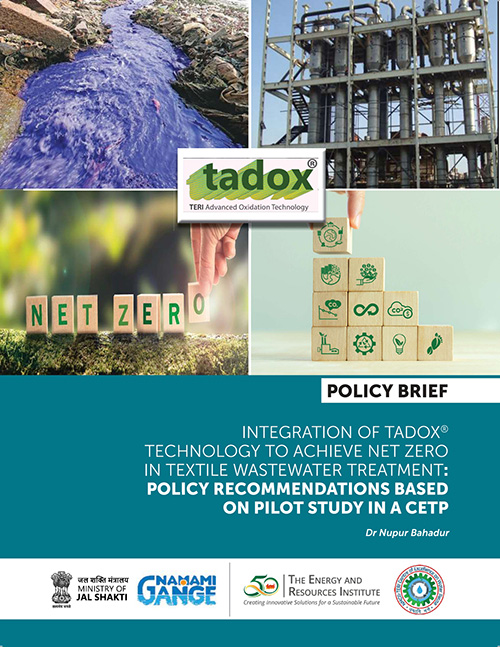Integration of TADOX® technology to achieve net zero in textile wastewater treatment: Policy recommendations based on pilot study in a CETP
Textile & Coloration Industry faces the most challenging issue of removal of colour and dissolved organics due to the presence of complex dyes and pigments in the effluent, which are not being able to be removed by conventional and biological treatment technologies. Which in turn impacts the biological treatment making is shock prone and leading to inadequate treatment with discharge of coloured effluent through drains in the rivers. This also impacts downstream tertiary treatment and makes ZLD highly resource and energy intensive and hence unsustainable, unaffordable, unacceptable and non-compliant. Moreover, such a resource and energy intensive nature of wastewater treatment contributes to GHG emissions and Climate Change and ultimately impacts the Life Cycle of effluent treatment. Hence in order to address the major issue of colour and curb point source pollution, mitigate associated climate risks and quantify environmental footprint it is vital to integrate in current systems, certain novel approaches and promising technologies like Advanced Oxidation which could help in addressing these gaps and challenges.
It is in this pursuit, The Energy and Resources Institute (TERI), New Delhi, has developed a novel technology called TERI Advanced Oxidation Technology (TADOX®), which involves UV-TiO2 Photocatalysis as an Advanced Oxidation Process (AOP), which removes colour and dissolved organics from the effluent, and when integrated and retrofitted at pre-biological treatment stage, safeguard it and makes it shock proof and reduces load on tertiary treatment, help achieve ZLD in much resource and energy efficient manner thereby expected to reduce GHG emissions and carbon footprint and overall operational expenditure.


